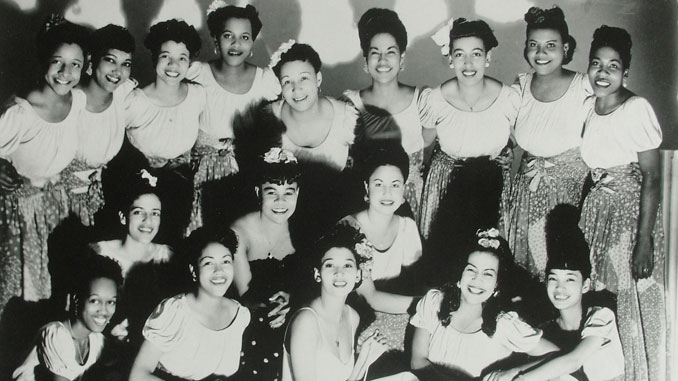
By Brianna Montgomery
Female musicians have been in the shadows of male musicians for many decades, but their stories are hardly ever told. But in revisiting the Judy Chaikin Documentary “The Girls in the Band,” their voices take center stage. The sexism, racism, and prejudice that made many of these female pioneers into trailblazers was the heart of a Women’s History Month talk on March 1, 2018, led by Kimberly Chandler, an Associate Professor of Communication Studies and Performance Studies at Xavier University, who teaches Women Studies courses.
“In the music industry when you decide that I am not going to let men determine who I am as a woman you become penalized, then treated as if you’re not their stereotype of a woman,” Chandler said.
The film touches on female musicians from the 1930s to present day, particularly in the big band era and jazz. Women of all races and background were looked down on in the industry and kept from playing musical instruments for the larger orchestras. This film tells the story of the journey of young talented women during this period, as they fought their way through sexism, with many becoming involved in women’s rights movements.
The documentary explored the story of musicians like Clora Bryant, an African American Jazz Trumpeter who first developed her musical abilities when she attended Prairie View College, as this Historically Black University was called at the time. Bryant played in an all-women’s band for 30-plus years starting in the 1940s. She then led a trailblazing career as part of the all-Black female jazz band called Queens of Swing. The group was considered the first female jazz band on a television variety program. Later in her career, she was invited to the Soviet Union to tour and lecture on jazz, a first of its kind visit for a jazz musician.
Bryant’s career is still significant today, because other than Beyoncé, Chandler said, there are few contemporary artists who hire only women in their bands. The rise of female musicians in the 1930s occurred because during World War II many female musicians got their first big breaks. This occurred as male musicians went off to fight a war, and this created a space for women to provide their musical talents to popular bands and orchestras. At that moment, men in the music industry got to finally see the talent of many female musicians that was once hidden.
It was also an important moment for White female musicians as well who played in mostly Black bands. Roz Cron was just 16 when she was spotted for her talents as a saxophonist in the 1930s. She played alongside Black women musicians and encountered the segregation her Black female bandmates faced. She was jailed and harassed for racial mixing at the time, the documentary showed.
Image also mattered, Chandler said. Even female musicians were required to have a certain physical look. In the documentary, some female musicians were told they did not look attractive enough to appear on television, while many more were told to wear dresses or outfits that revealed a lot of skin. Cron recalled in the film that said she was told to smile while playing her instrument.
“How are we supposed to smile with an instrument pressed against your lips,” Cron said in the film.
During the Civil Rights Era, many female groups had to worry about Jim Crow and segregation when traveling through the states in the South. African-American women were denied access to play in some bands and venues because of segregation and racism.
“When I think of the music industry now, they don’t show women as musicians they show them as the veneer of the music business,” said Paula Singleton, an Assistant Director with Xavier’s library, who showed the film as part of a Library Film Series.
She said she hoped the documentary brought awareness to an era where women were equally valued for creating and performing music, as they are today for just selling albums and singles.
Recommended For You.



Be the first to comment